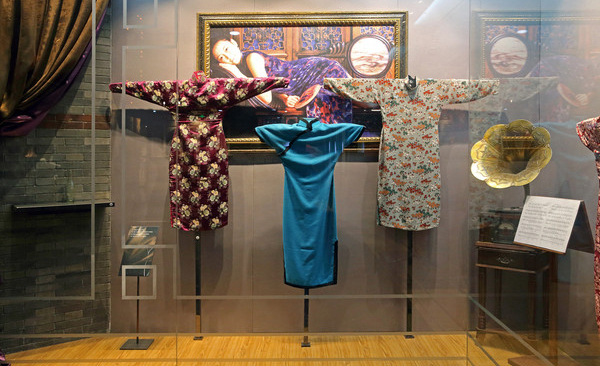Traditional costumes reflect aesthetic ideals

The cheongsam was in vogue for women in Shanghai during the 1930s.
China is renowned for its long history of clothing design. Clothing culture represents a significant and inseparable part of traditional Chinese culture. It reflects social development and people’s spiritual and cultural pursuits.
Guo Moruo, a great historian and litterateur, indicated that clothes are a representation of culture and a visual representation of schools of thought. Traditional Chinese clothing experienced thousands of years of accumulation and evolution as it integrated various aesthetic ideas and tastes of different periods and formed a unique cultural system of Chinese costumes.
Amid the current phase of economic globalization and cultural diversification, traditional Chinese costumes have yielded brilliant results on the world stage. Also, the aesthetic ideas of traditional clothing potentially influence Chinese people’s fashion tastes. Scholarly research on the aesthetic ideas of traditional clothing culture will contribute to the rapid development of the clothing industry.
In ancient China, Confucianism represented the orthodox thoughts of feudal rulers, and Confucian clothing ideas exerted profound influence on later generations’ clothing concepts. Confucian clothing ideas regarded benevolence as a moral ideal and utilized concepts relating to class, order and etiquette to shape the dress code of the times. Confucius stressed the political and ethical significance of clothing and social codes. Clothes were an indicator of status, profession, age and gender.
But Taoism, another important philosophical school in ancient China, focused on conveying the natural beauty of clothing. Laozi, the main representative of Taoism, formed the theory that man is an integral part of nature, which was not only the basic essence of Chinese philosophy, but also laid the philosophical foundation of the design style of ancient Chinese costumes. Ancient tailors adopted natural materials to make clothes and regarded nature as their muse when it came to dyeing, decorating and perfecting their designs.
China has a vast territory and various ethnic nationalities. Every group has different ideas on designing styles, colors and materials of clothes. And every dynasty had different dress codes and etiquette. These cultural traits represent a treasure trove for studying traditional clothing culture and have provided artistic inspiration for modern designers.
Zhang Yi is from the School of Arts and Design at Zhengzhou University of Light Industry, Henan Province.
